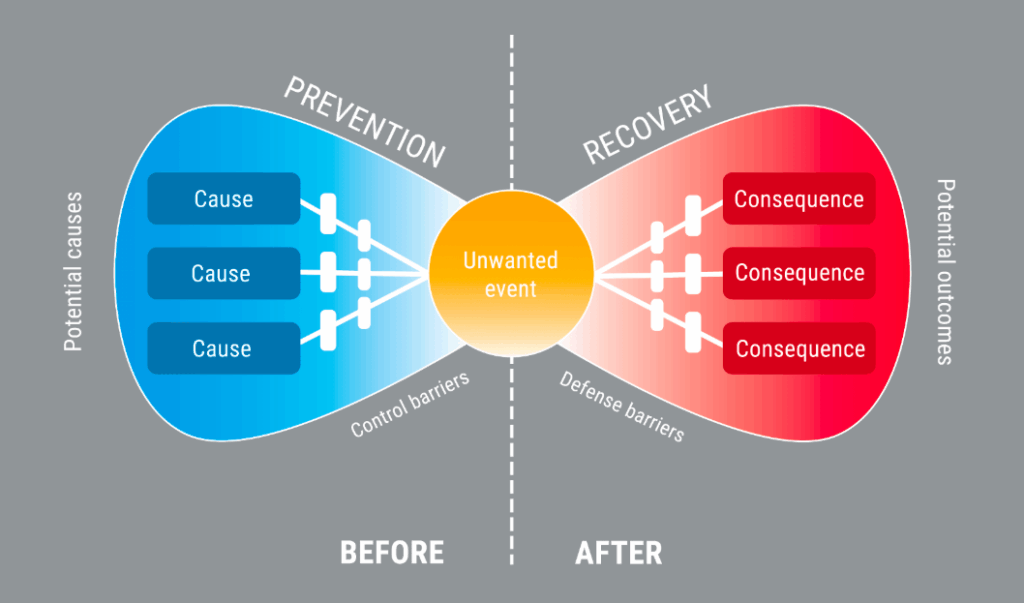When revenue stalls, it’s rarely because your teams aren’t trying: it’s because they’re not aligned.
Sales is pushing one way, Marketing is guessing, and Customer Success is left cleaning up promises they didn’t make.
Actually, companies that unify GTM teams through Revenue Operations (RevOps) grow 19% faster and are 15% more profitable than those stuck in silos.
That’s a competitive reset. And when you build your RevOps strategy with an agency that actually understands the mechanics of alignment?
That’s when growth gets predictable, scalable, and a whole lot less chaotic.
Let’s break it down.
Why Revenue Operations Is Your GTM Survival Kit
There’s a certain kind of chaos that creeps in when your revenue teams aren’t speaking the same language. It’s subtle, but it’s the lead that goes cold because no one followed up.
The deal dies because Customer Success didn’t know what Sales promised. The campaign that “performed well” but didn’t actually move the pipeline. Death by a thousand misfires.
Revenue Operations (RevOps) exists to end that chaos.
But let’s be clear: RevOps is about designing an operating system, a framework where Sales, Marketing, and Customer Success aren’t just aware of each other’s goals, but actively working toward shared outcomes.
Because here’s the hard truth: if your GTM teams aren’t aligned, you’re bleeding revenue.
The Cost of Misalignment (And It’s Higher Than You Think)
Let’s talk numbers:
- 65% of sales and marketing professionals say they experience misalignment at the leadership level.
- Only 30% of companies have a unified data strategy, making performance tracking guesswork.
- And according to HubSpot, companies with tightly aligned sales and marketing functions see 208% more revenue from their efforts.
So if your GTM engine is misfiring, it’s a structural problem.
What RevOps Actually Does
The value of RevOps is operational. It:
- Creates a single source of truth for revenue data
- Standardizes workflows so handoffs stop breaking
- Builds real accountability between GTM teams
- Makes forecasting less of a finger-crossing exercise and more of a strategy
And when done right with the guidance of a team that understands your business model and growth goals, RevOps becomes the infrastructure for scalable, predictable growth.
From Friction to Flow: The 4 Pillars of a Modern RevOps Framework
Every company wants more revenue, but most are building on cracked foundations.
Leads pour in, dashboards get prettier, and yet… the pipeline still leaks.
The fix is RevOps, grounded in four core pillars that make your entire GTM motion work like it should.
Let’s break it down.
Pillar 1: People – Get the Right Roles Moving in the Same Direction
You don’t need more meetings. You need role clarity. In too many orgs, sales owns the deal, marketing owns the funnel, and customer success owns the mess. RevOps flips that.
- It defines who is responsible, not just for results, but for every transition point in the customer lifecycle.
- It builds cross-functional empathy. Marketing sees what Sales needs. Sales respects what CS carries post-close.
- It aligns incentives, so hitting quota doesn’t mean overpromising and underdelivering.
Pillar 2: Process – Fix the Gaps Before You Scale Them
Scaling broken processes is how good businesses collapse. RevOps brings consistency to things that were once chaos:
- Lead handoffs don’t get buried in inboxes.
- Opportunities are tracked the same way across teams.
- Customer onboarding doesn’t start with “so… what did they buy again?”
Think of it like building rails for your revenue train. Once they’re in place, you can go faster without flying off the tracks.
Pillar 3: Data – Turn Gut Feels into Growth Signals
A bloated CRM filled with duplicate contacts, unscored leads, and vague deal stages isn’t “data.” It’s a liability.
RevOps enforces data governance and ensures:
- Everyone works from the same source of truth
- Dashboards are performance instruments
- Forecasts reflect real-time activity, not wishful thinking
When data is reliable, teams stop arguing about what’s happening and start deciding what to do about it.
Pillar 4: Technology – Make the Stack Work for the Teams, Not Against Them
Here’s the trap: more tools ≠ more efficiency. Most teams use 20% of 80% of their tech stack. RevOps makes tech integrated, intuitive, and invisible.
- It connects tools so that data flows effortlessly across platforms.
- It eliminates redundancies – say goodbye to four platforms doing the same job badly.
- It aligns tool adoption with actual workflows, so reps want to use them.
Which RevOps Framework Matches Your Growth Stage?
Not all RevOps frameworks are built the same, and not all of them are built for you.
That’s the part most agencies and consultants skip: matching the framework to your growth stage, team structure, and revenue model.
So instead of forcing you into a rigid system, let’s break down some standout frameworks that actually flex with your business. Think of this as your RevOps “fighter selection screen.”
If you’re scaling fast and feel the cracks forming: PEAS Framework
Pillars: Process, Enablement, Analytics, Strategy
You’re moving fast. New hires, new tools, and shifting goals. The PEAS Framework is built for high-growth companies that need to scale without breaking.
Source: Acte.in
- Process: Standardize workflows before things get messy.
- Enablement: Train teams to not just use tools, but own their roles.
- Analytics: Build real-time visibility into pipeline performance.
- Strategy: Align day-to-day operations with long-term business goals.
Perfect for startups and mid-market teams that feel like they’re duct-taping their GTM together.
If customer retention is just as important as acquisition. The Bowtie Model.
Created by Winning by Design
The Bowtie flips the traditional funnel on its head by treating post-sale stages (renewals, expansion, CS) as revenue-generating moments, not an afterthought.

Source: Diri.ai
- Maps the entire customer lifecycle, from lead to loyal advocate.
- Makes CS a revenue driver, not just a support team.
- Works best for SaaS and subscription models.
Use the Bowtie if upsells, retention, and LTV are as critical as new deals.
If your team’s stepping on each other’s toes: RACI Framework
Responsible. Accountable. Consulted. Informed.
If you’re constantly asking, “who owns this?” – RACI is your fix. It brings role clarity across teams with a simple, powerful matrix.
Source: Aihr.com
- No more duplicated efforts or dropped balls.
- Removes ambiguity in projects, reporting, and campaigns.
- Works well for teams that are expanding or restructuring.
If GTM meetings feel like a group project with no leader, this one’s for you.
If your data’s a mess but you love precision: Gartner’s Predictive Framework
Built for organizations that want their CRM to become a crystal ball, this model leans hard into AI, automation, and real-time decision-making.
Source: Gartner
- Uses predictive analytics to improve forecasting and pipeline health.
- Surface patterns that drive smarter GTM decisions.
- Best for data-rich, insight-hungry orgs (often mid-market to enterprise).
If your dashboards are nice to look at but bad at telling the future, this is your path.
Quick Match Guide:
| Your Situation | Best Framework |
| Growing fast, need structure | PEAS Framework |
| SaaS or subscription-based, focus on retention | Bowtie Model |
| Team roles are unclear or overlapping | RACI Matrix |
| Data everywhere, but no clarity | Gartner’s Predictive Model |
Ready to Align Sales, Marketing & CS? Here’s How We Can Help
At Azarian Growth Agency, we build Revenue Operations into the core of your go-to-market strategy.
Whether you’re scaling fast, cleaning up data debt, or trying to turn departmental friction into flow, we tailor RevOps frameworks that match your growth stage and revenue model.
Our team brings together deep expertise in:
- CRM architecture and integration that eliminates silos
- Marketing and sales funnel optimization to stop lead leakage
- Lifecycle mapping and CS enablement to turn retention into revenue
- Data analytics and performance tracking that actually fuel decisions
And because we sit at the intersection of strategy, execution, and enablement, we don’t just recommend fixes, we implement them with you, side by side.
If you’re serious about building a GTM engine that scales without chaos, we should talk.

